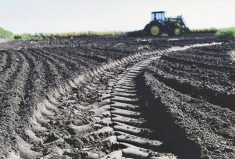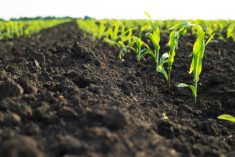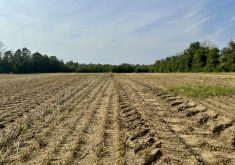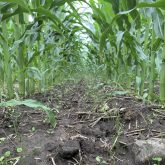Researchers at the University of Guelph are studying how best management practices on farms affect soil microbial communities and greenhouse gas emissions.
Kari Dunfield, professor and Canada Research Chair in the School of Environmental Sciences, postdoctoral researchers Dasiel Obregon and Tolulope Mafa-Attoye and other collaborators recently published studies on whether riparian buffer systems produce greenhouse gasses such as methane.
Why it matters: There is lots to learn about carbon emissions in complex biological systems and a better understanding can inform future management decisions.
Read Also

The forced Japanese-Canadian farmers of the Second World War
Manitoba’s sugar beet farms drew on displaced Japanese-Canadians from B.C. during the Second World War
“Riparian buffers are really important to protect waterways from nutrient runoff from agricultural fields and they can increase biodiversity and sequester carbon,” said Dunfield.
“Our research is trying to identify riparian systems that also minimize the amount of GHGs that are released.”
The study site at Washington Creek in Oxford County includes a rehabilitated tree buffer and grassed buffer as well as undisturbed coniferous and deciduous forests adjacent to an agricultural field. It was set up several years ago to study how different buffers rehabilitate waterways and is now being used to evaluate other environmental impacts.
The researchers found that the rehabilitated tree buffer, grassed buffer and coniferous forest, where soil is exposed to more sunlight and heat, became methane sinks that absorbed and retained the gas.
Soils in the deciduous forest, however, became a source of methane. Leaf litter and a high water table kept the soil wet enough to provide microbes with ideal conditions all year.
Basically, the wetter the soil, the higher the methane emissions, said Mafa-Attoye.
While previous studies found soil moisture and organic carbon drive methane emissions, this new research concludes that microbes play a significant role. Researchers point to methanogens that produce and release the gas to the atmosphere and methanotrophs that fix and hold methane in the soil.
Methanogens are anaerobic, meaning they thrive in oxygen-deprived environments. In a deciduous forest, where a lot of water fills pore spaces in place of oxygen, the methanogens are more active, releasing more methane.
In a coniferous or rehabilitated forest or a grassland, the methanogens are more likely to be dormant. The methanotrophs remain active, keeping methane trapped underground.
“For landowners, there isn’t one answer on which riparian system is best,” says Dunfield. “But if it’s a wet area that’s going to hold water for the entire year, you might want to consider an evergreen over a deciduous tree, where you know you’re going to get carbon dropping that will be feeding the microbes.”
She notes that methane is of particular interest in the studies because it’s one of the most potent GHGs.
Farmers can use this information to better design and manage buffer zones, but Dunfield sees it as particularly important in a situation where farmers are counting carbon credits and looking at buffer zone carbon sequestration.
“You have to remember that all of the carbon doesn’t stay put,” she says. “Since the microbes are happily living there, the carbon is cycling and it comes out as GHG or carbon dioxide.”
This research was part of a collaborative project among the University of Guelph, University of Sao Paolo, University of Waterloo and University of Toronto. The project was funded by Agriculture and Agri-Food Canada, the Natural Sciences and Engineering Research Council and the São Paulo Research Foundation.














